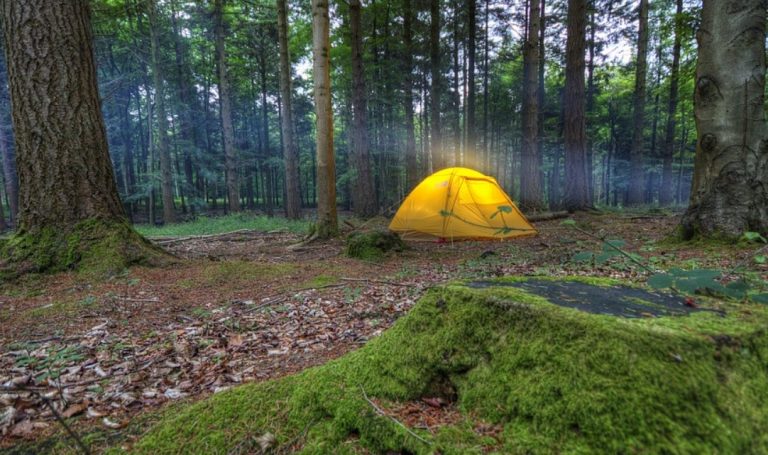If you are new to camping and not familiar with living in the outdoors, then you need to spend some time at home trying to set up your tent. This will effectively prevent you from having problems when pitching after sunset or in bad weather conditions.
For camping to become enjoyable, you need to know the ideal place to pitch your tent and the basic methods of pitching your tent.
Choosing the ideal place
Most campgrounds have designated and well established camping areas for you to use. Maybe you want to try some fresh camping places outside of these areas. Then safety is something you must consider.
In low-lying areas, you may encounter flash floods. Water always flows downhill. If you camp near rivers and streams, you may encounter floods. Therefore, it is important to choose a higher ground for camping.
In addition, you also need to consider the safety of the surrounding environment. Watch out for spider webs, bee nests and deadly black widows, and take early insect repellent measures.
Your tent also needs to be away from fire pits to avoid embers falling on your tent. Camp at least 200 feet away from water sources to avoid contaminating water bodies.
Laying the Groundwork
Gather the things you’ll need to set up your tent, including tents, poles, rain flies and footprints or tarps.
Not every tent comes with a footprint or tarp. You may need to purchase them separately. They protect the floor of your tent and keep it dry.
Try to choose a flat area to pitch your home tent. Remove sticks, leaves, rocks and other debris from the ground in order to set up your tent.
A used campsite can ease your work while avoiding harm to the surroundings.
Natural windbreaks and shady areas are ideal for setting up your tent. Keep an eye on the wind direction and make sure the wind doesn’t blow directly into your tent.
Put down a footprint or tarp.
Unroll and set up your tent
Unfold your tent, find the bottom of the tent and place it on the footprint or tarp.
It’s important to consider the orientation of your tent door, especially if you need to set up a large tent. Because once the tent is set up, it will be difficult to reposition it.
Prepare the pegs/stakes and record the number of tent pegs for review when packing.
Attaching tent poles
Some tent poles are attached to bungee cords. Some tent poles may be numbered and require you to attach them yourself.
Collect your tent poles and place them on the tent. Insert the tent poles into the corresponding flaps in the tent. Most basic tents will have two tent poles that cross over each other to form the basic frame of the tent.
To attach the tent poles to the tent, you would usually place the end of the pole in the eyelet at each corner and then insert the pole through the small flaps of the tent. Some tents use plastic clips attached to the top of the tent to hold the poles in place.
Securing your tent
To prevent sudden winds, you need to secure your tent and other things in one place. Before securing the tent, you need to make sure the doors of the tent are facing the right way.
Pull the tent corners apart to remove any slack and add tension to the tent, and use pegs or stakes to secure the four tent corners to the ground at a 45% angle. The pegs or stakes should be pushed deep enough into the ground.
To allow easy removal of the pegs or stakes, they should be exposed and long enough to slide the tether through.
A large rock or hammer can help you drive the nail or stake into the ground. For your safety, always pack extra nails or stakes.
Attaching the Rainfly
If your tent comes with a rainfly. You can drape the rainfly over the top of your tent. They act like an umbrella to protect your tent from the wind and rain.
Some rain covers require additional tent poles to secure them. Please check the tent’s instructions to learn how to assemble them.
- Coleman Dark Room Skydome Camping Tent Review - August 7, 2021
- Moon Lence Instant Pop Up Camping Tent Review - August 7, 2021
- Ozark Trail 10 Person 2 Room Cabin Camping Tent Review - August 6, 2021
